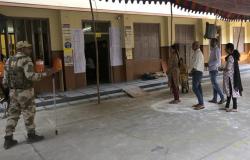Data source
This study used data from the Medical Information Mart for Intensive Care (MIMIC)-IV version 2.2, with permission obtained for the database (No. 0403000206). Informed consent was waived due to the de-identified nature of the data. MIMIC-IV is a publicly available dataset that contains comprehensive and de-identified information of patients admitted to the ICUs of Beth Israel Deaconess Medical Center in Boston, US, spanning the period from 2008 to 20197. The MIMIC-IV dataset encompasses a total of 76,540 admissions.
Due to the utilization of only anonymized publicly available third-party data, this study was exempt from review by the human subjects committee. The reporting of this study adhered to the guidelines outlined in the REporting of studies Conducted using Observational Routinely-collected health Data (RECORD) Statement8.
Patient selection
We included all adult patients with acute pancreatitis in the database who had their first ICU admission and a length of stay exceeding 24 h. Recorded heart rates were collected from the time of ICU admission, including the date and time of collection, and hourly medians were calculated. Any hours with missing heart rate measurements were identified, and patients were excluded if more than 20% of the hourly measurements were missing. To define prolonged elevated heart rate (peHR) episodes, we used the standard definition of 11 consecutive hourly heart rate measurements exceeding 100 beats per minute within any 12-h interval. In consideration of potential censoring due to death occurring during an episode of elevated heart rate, patients who had persistently high heart rates leading up to death were also classified as part of the peHR group using an extended definition. A sensitivity analysis was conducted excluding these patients from the peHR group, defining the episode based solely on the standard definition. Furthermore, a secondary analysis was performed by evaluating various combinations of duration and heart rate thresholds. This involved assessing different heart rate thresholds ranging from 90 to 120 beats per minute and durations ranging from 6 to 16 h.
Data extraction
The information extraction from the MIMIC-IV database was performed using Navicat Premium software (version 16). Specifically, data were extracted from the following five categories: (1) Demographics, which included age, gender, race, and weight; (2) Vital signs, encompassing temperature, heart rate, blood pressure, and pulse oxygen saturation; (3) Comorbidities, consisting of conditions such as myocardial infarction, congestive heart failure, peripheral vascular disease, cerebrovascular disease, dementia, chronic pulmonary disease, rheumatic disease, peptic ulcer disease, liver disease, diabetes, renal disease, and malignant cancer; (4) Treatments, including the use of vasopressors/inotropes, beta-blockers, and mechanical ventilation; (5) Duration of hospitalization, follow-up survival status, and follow-up survival time. The database provided 1-year follow-up information for all discharged patients.
Laboratory variables were exclusively obtained from the initial 24 h following patient admission. In instances where multiple results were available, the average value was used. To mitigate potential bias, variables with missing values exceeding 10% were excluded. For variables with less than 10% missing values, the imputation process used the predictive mean matching method with distance aided selection of donors, which was implemented using the ‘mice’ package in the R software 9.
Outcomes
We decided in advance to use the 90-day mortality as the primary outcome measure, considering it to be more meaningful than in-hospital mortality and less susceptible to being affected by underlying non-acute disease states.
Statistical analysis
Statistical analysis included t-tests or analysis of variance (ANOVA) for continuous variables. Continuous variables were presented as mean ± standard deviation or median (interquartile range, IQR). For categorical variables, numbers (proportions) were used, and the analysis was conducted using chi-square tests, corrected chi-square tests, or Fisher’s exact test. Kaplan–Meier survival analysis was employed to assess the incidence rate of major outcome events in distinct stratified groups based on elevated prolonged heart rate (peHR). Disparities were evaluated using log-rank tests. Cox regression analysis was performed to investigate the association between peHR and the 90-day mortality rate. Statistical analysis was performed using the software Stata 15.1 (https://www.stata.com/) and R 4.2.1 (https://www.r-project.org/) in the Windows operating system. Statistical significance was set at a p-value of less than 0.05.
Ethics approval and consent to participate
The study was an analysis of a third-party anonymized publicly available database with pre-existing institutional review board (IRB) approval. The Institutional review boards at the Beth Israel Deaconess Medical Center (protocol 2001-P-001699/14) and Massachusetts Institute of Technology (protocol 0403000206) have approved the data collection and the use of MIMIC-IV for research purposes and granted waiver of informed consent All methods were carried out in accordance with relevant guidelines and regulations.






